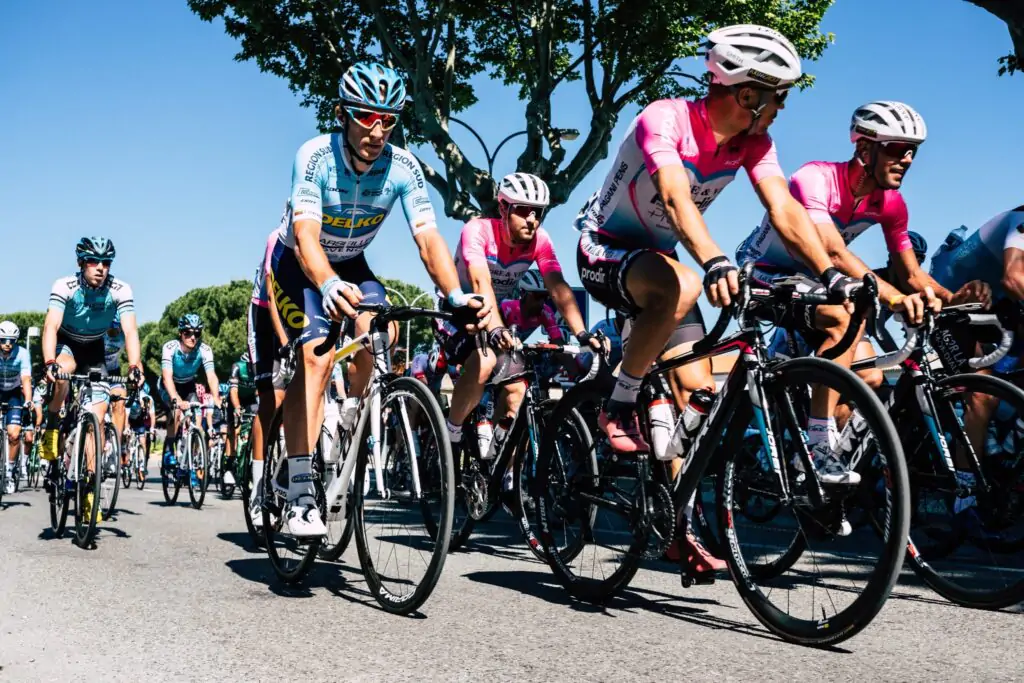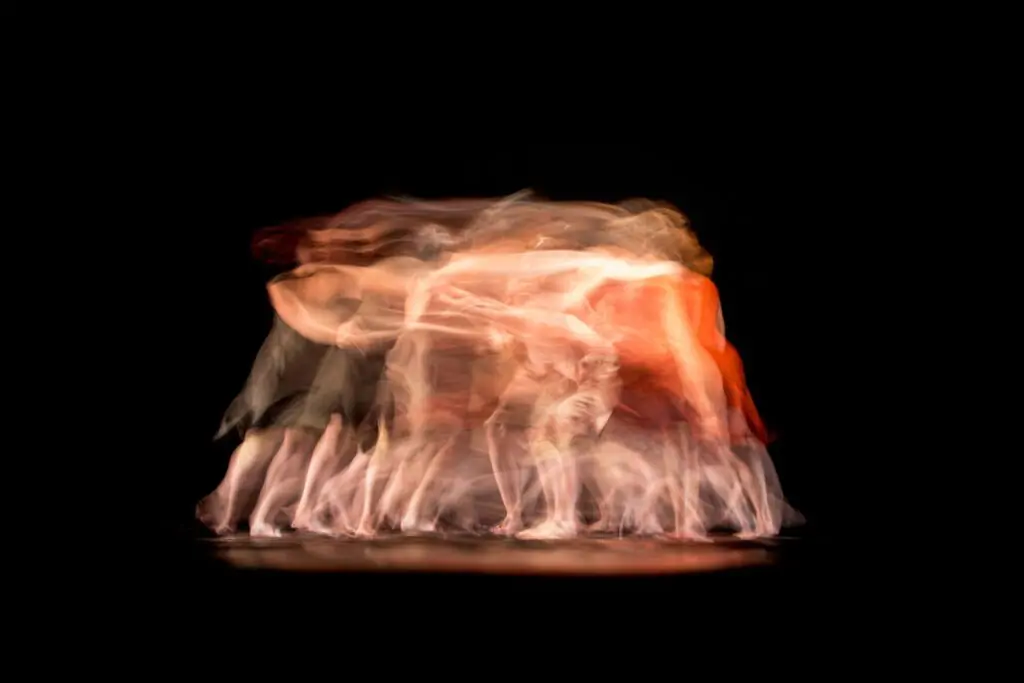How to Tell if a Woman is a Nymph – 5 Wonderful Mysteries

Table of Contents
The concept of a nymph, rooted deeply in mythology and modern psychology, evokes a blend of intrigue and mystery. This blog post aims to shed light on how to discern if a woman possesses the qualities often associated with nymphs. We’ll explore various aspects, from psychological traits to cultural representations, providing a comprehensive understanding of this complex subject.
Understanding Nymphomania
Nymphomania, often a subject of debate, straddles the line between myth and medical diagnosis. Historically, it referred to women exhibiting intense sexual desires, a notion that has evolved significantly over time. In contemporary terms, nymphomania falls under the umbrella of hypersexuality, redefined in psychiatric manuals like the DSM-5 as “sexual interest/arousal disorder.”
Redefining Sexual Disorders: The shift in How to Tell if a Woman is a Nymph reflects a broader change in acknowledging sexual disorders. It’s crucial to approach this topic without stigmatizing it. Understanding nymphomania as part of a wider spectrum of hypersexuality helps challenge outdated stereotypes and societal biases towards female sexuality.

Complexities and Individual Experiences: Each individual’s experience with hypersexuality is unique, influenced by psychological, cultural, and social contexts. Some argue that the concept of nymphomania mirrors society’s discomfort with female sexuality, suggesting a focus on promoting healthy sexual education and personal autonomy instead of pathologizing women’s sexual desires.
Evolution of Nymphomania in Psychiatric Understanding
| ERA | Description |
| Historical | Seen as intense sexual desire in women |
| Modern | Classified as a subtype of hypersexuality |
Key Points in Understanding Nymphomania
- Shift from stigma to a nuanced understanding.
- Recognition as a part of the hypersexuality spectrum.
- Emphasis on individual experiences and cultural influences.
“It is important to approach nymphomania without stigmatizing it. Understanding it as a manifestation of a broader hypersexuality spectrum helps challenge outdated stereotypes.”
– Dr. Maria Rodriguez, Psychologist
For more information on the evolution of sexual disorders in psychiatry, visit The Diagnostic and Statistical Manual of Mental Disorders (DSM-5).
Identifying Traits of a Nymph
In exploring the enigmatic nature of nymphs, certain traits and characteristics emerge as potential indicators. It’s important to remember that these traits are not definitive proof but rather suggestive signs that a woman may align with the qualities often associated with nymphs.
Characteristics and Behaviors
- A Preference for Solitude and Introspection: Nymphs are often described as deeply introspective, with a curiosity that drives them to explore new ideas and experiences. They may show an eagerness to learn new skills and broaden their knowledge base, indicating a rich internal world and a thirst for discovery.
- Strong Intuition and Spiritual Connection: Many nymphs exhibit signs of heightened intuition or even magical prowess, such as clairvoyance or precognitive dreams. This spiritual connection, while not unique to nymphs, is often more pronounced in them.
- Playful and Mischievous Personality: Music and art are closely linked to nymphs, reflecting their ability to express emotions creatively. This trait manifests in a playful, sometimes mischievous personality that resonates with artistic expression.
- Timelessness and Agelessness: Nymphs often have a mature perspective on life, providing them with insights into everyday life events and circumstances. This wisdom often makes them respected confidants among friends and family.
Emotional and Social Traits
- Dominance in Relationships: Nymphs may show a preference for taking the lead in intimate situations, displaying strong dominance traits.
- Metaphorical Speech: Communication style of nymphs often includes metaphorical language, rich in innuendos and dense with hints.
- Unique Social Dynamics: Nymphs might evoke envy among women and admiration among men. Their social interactions can be complex, marked by an unusual blend of attraction and challenge.
Connection to Nature and Artistic Expression
- Deep Connection with Nature: Many nymphs have a profound affinity for the natural world. This connection might manifest in various forms, such as a love for outdoor activities or a deep understanding of flora and fauna.
- Artistic Expression: A strong affinity for various forms of art is common among nymphs. They are often the source of inspiration for creative endeavors, finding solace and expression in artistic pursuits.

Common Traits of a Nymph
- Curiosity and love for learning
- Heightened intuition
- Creative expression through art and music
- Wisdom beyond years
- Leadership and dominance in personal relationships
- Complex social interactions
The concept of nymphs has been a subject of fascination in various cultures, often symbolizing the embodiment of nature and feminine mystique.
For a deeper understanding of nymph-like qualities in mythology and culture, explore Theoi Greek Mythology.
Common Misconceptions and Myths
In any discussion about nymphs, it’s crucial to address the myriad of misconceptions and myths that have developed over time. Understanding these myths helps in separating fact from fiction, providing a clearer picture of what it means to be a nymph.
Misconception 1: Nymphs Are Promiscuous
- Reality: While nymphs may have a liberal view of sexuality, this doesn’t equate to promiscuity. It’s essential to distinguish between sexual freedom and promiscuity, as they are not synonymous.
Misconception 2: Emotional Instability
- Reality: Contrary to the belief that nymphs are emotionally unstable, they often possess a deep understanding of their emotions, making them more emotionally attuned and stable.
Misconception 3: Attention Seeking Behavior
- Reality: Nymphs naturally draw attention due to their magnetic personalities, not because they seek it. Their allure is more about the energy they radiate than a conscious desire for attention.
Misconception 4: Manipulative Nature
- Reality: Nymphs are often upfront about their desires and intentions, demonstrating emotional intelligence that fosters honesty in relationships.

Understanding these misconceptions is vital in approaching the topic of nymphs with a more informed and respectful perspective.
Myths vs. Reality of Nymphs
| Myth | Reality |
| Promiscuity | Liberal view of sexuality |
| Emotional Instability | Emotionally attuned |
| Attention Seeking | Natural allure |
| Manipulative | Emotionally intelligent |
The misconceptions about nymphs often reflect societal biases and misunderstandings about female sexuality and emotional expression.
The Psychological and Social Implications
The concept of a nymph, especially when related to hypersexuality, carries significant psychological and social implications. Understanding these facets is crucial in comprehending the broader picture of what it means for a woman to exhibit nymph-like characteristics.
Psychological Aspects
- Hypersexuality: Hypersexuality, often linked with the concept of nymphomania, can stem from various factors including hereditary predispositions, brain chemistry imbalances, and childhood traumas. It’s essential to approach this topic with empathy and understanding, recognizing the complexity of the condition.
- Impact on Social and Personal Relationships: The traits associated with being a nymph can profoundly affect social interactions and personal relationships. Issues may arise in forming and maintaining typical social connections, and there’s a risk of isolation.
Social Context
- Societal Perceptions and Stigma: The way society perceives hypersexuality, and by extension, nymph-like traits, often carries stigma and misunderstanding. This can lead to further complications in the social and personal lives of those affected.
- Risk of Sexually Transmitted Diseases: Due to the nature of hypersexual behavior, there’s an increased risk of sexually transmitted diseases, highlighting the importance of awareness and preventative measures.
Addressing the Challenges
- Seeking Professional Help: It’s crucial for individuals exhibiting nymph-like characteristics, especially when associated with hypersexuality, to seek professional help. Mental health professionals can provide the necessary support and treatment.
- Building Support Systems: Establishing a robust support network of family, friends, or support groups is vital for coping with the challenges associated with these traits.

Key Psychological and Social Implications
- Complexities of hypersexuality
- Impact on social and personal relationships
- Societal perceptions and stigma
- Increased health risks
Understanding and empathy are essential when addressing the psychological and social implications of nymph-like characteristics.
Coping Strategies and Support
For individuals in a relationship with someone exhibiting nymph-like traits, particularly those related to hypersexuality, it’s vital to adopt effective coping strategies and support mechanisms. This section focuses on practical tips and advice for managing such relationships.
Establishing Open Communication
- Importance of Dialogue: Open and honest communication is the cornerstone of any healthy relationship. Discussing feelings, expectations, and boundaries is particularly crucial in relationships involving nymph-like traits.
- Discussing Consent and Boundaries: Ensuring mutual understanding and respect for consent and personal boundaries is essential. This helps in fostering a safe and respectful relationship environment.
Encouraging Healthy Interests
- Promoting Non-Sexual Hobbies: Encouraging participation in hobbies and interests that are non-sexual can provide a balanced and fulfilling lifestyle. This also helps in diverting attention from hypersexual tendencies.
- Planning Activities Together: Engaging in shared activities strengthens the bond and provides opportunities for connection beyond sexual intimacy.
Emotional Support and Understanding
- Being Patient and Understanding: Coping with hypersexuality might take time, and patience is key. Understanding and empathizing with your partner’s struggles is crucial for a supportive relationship.
- Avoiding Judgment: Refraining from judgmental or critical attitudes is important. Supportive and affirmative behavior fosters a positive and encouraging environment.
Seeking Professional Help
- Couples Counseling: Couples therapy can be highly beneficial in addressing relationship challenges and developing coping strategies tailored to individual needs.
- Individual Therapy: For the individual exhibiting nymph-like traits, personal therapy can provide insights and techniques for managing their behavior and emotions.
A supportive and understanding approach, combined with professional guidance, can significantly improve the dynamics of a relationship involving nymph-like traits.

The Nymph in Mythology and Culture
The concept of nymphs has a rich history in mythology and culture, offering a fascinating glimpse into how these entities have been perceived and represented throughout the ages.
Nymphs in Mythology
- Historical Significance: In ancient mythology, nymphs were often depicted as minor goddesses or spirits of nature. They were associated with specific natural elements like forests, rivers, and mountains, embodying the life force of the natural world.
- Cultural Depictions: Different cultures have portrayed nymphs in various ways. In Greek mythology, for instance, they were often seen as beautiful, immortal beings who interacted with gods and humans alike.
Symbolism and Representation
- Nature and Femininity: Nymphs are often symbolic of nature and its untamed aspects. They represent a form of natural femininity, unbound by societal norms and conventions.
- Artistic Inspiration: Throughout history, nymphs have been a source of inspiration in art and literature, symbolizing beauty, freedom, and the mysterious aspects of nature.
Nymphs in Modern Context
- Spiritual Entities: While rooted in mythology, some believe nymphs exist as spiritual entities or in different realms, embodying an ethereal allure that transcends physical existence.
- Psychological Interpretation: In a modern context, nymph-like qualities can be interpreted psychologically, reflecting certain personality traits or behaviors rather than literal mythological beings.
Roles of Nymphs in Mythology
- Guardians of natural elements
- Interaction with gods and humans
- Symbols of nature and femininity
- Sources of artistic and literary inspiration
The mythological and cultural significance of nymphs highlights the enduring fascination with these figures as symbols of natural beauty and mystery.

Conclusion: How to tell if a woman is a nymph.
In unraveling the mystique of nymphs, this blog post has traversed through various dimensions – from mythological interpretations to psychological and social implications. The journey into understanding what it means to be a nymph or exhibit nymph-like traits reveals a complex tapestry of characteristics, misconceptions, and cultural significances.
Key Takeaways
- Nymphomania and Hypersexuality: We’ve seen how the concept of nymphomania has evolved, transitioning from a stigmatized label to being understood within the broader context of hypersexuality, emphasizing empathy and understanding.
- Traits and Characteristics: The traits associated with nymphs, including intuition, connection to nature, and artistic expression, are suggestive rather than definitive. They paint a picture of a personality type that is deeply connected with the inner and outer worlds.
- Debunking Myths: Addressing common misconceptions about nymphs helps in fostering a more informed and respectful understanding of these traits, steering clear of societal biases.
- Coping and Support: For those in relationships with individuals exhibiting nymph-like characteristics, empathy, communication, and professional guidance are key to navigating the complexities involved.
- Cultural and Mythological Significance: The mythological and cultural explorations underline the enduring allure and symbolism of nymphs, representing natural beauty and mystery.
Embracing Understanding and Empathy
As we conclude, it’s vital to approach the topic of nymphs and related traits with an open mind and a willingness to understand. Whether viewed through the lens of mythology, psychology, or personal experience, the concept of nymphs invites us to explore the depths of human nature and its multifaceted expressions.
Additional Resources
For those interested in delving deeper into the subjects discussed in this article, the following resources provide extensive information and insights:
- The Diagnostic and Statistical Manual of Mental Disorders (DSM-5) for an understanding of hypersexuality and its classification.
- ChangedMind offers detailed articles on coping strategies and relationship advice.
- Theoi Greek Mythology for an exploration of nymphs in ancient Greek culture and mythology.
- Reddit Mythology Discussions for community-driven conversations about nymphs and other mythological beings.
This article aimed to provide a comprehensive, informative, and empathetic exploration of the topic “How to Tell if a Woman is a Nymph.” By blending mythological, psychological, and practical perspectives, we hope to have offered valuable insights and understanding into this intriguing subject.
FAQs for How to Tell if a Woman is a Nymph
Q1: Is nymphomania a real medical condition?
A: Yes, nymphomania, now more commonly referred to as hypersexuality, is recognized in psychiatric literature. It’s classified under “sexual interest/arousal disorder” in the DSM-5. It’s important to approach this condition with understanding and not stigmatize it.
Q2: What are common traits of a nymph?
A: Common traits may include a strong intuition, deep connection to nature, artistic expression, and metaphorical speech. However, these traits are indicative rather than definitive and can vary widely.
Q3: Are there misconceptions about nymphs?
A: Yes, common misconceptions include equating nymph-like traits with promiscuity, emotional instability, attention-seeking behavior, and manipulative nature. These misconceptions often stem from societal biases and misunderstandings.
Q4: How can someone cope if their partner exhibits nymph-like traits?
A: Coping strategies include open communication, encouraging non-sexual hobbies, being patient and understanding, and seeking professional help like couples therapy. It’s crucial to approach the situation with empathy and support.
Q5: Do nymphs play a role in mythology?
A: Yes, in mythology, nymphs are often depicted as minor goddesses or spirits of nature. They symbolize natural beauty, femininity, and have inspired art and literature across various cultures.
Q6: Can men exhibit nymph-like traits?
A: While the traditional concept of nymphs is female-centric, the traits associated with nymphs, particularly in the context of hypersexuality, can be exhibited by any gender. However, in mythology, male counterparts might be referred to by different names, such as satyrs or fauns.
Q7: How does society view nymph-like traits?
A: Societal views on nymph-like traits, especially related to hypersexuality, can be mixed, often carrying stigma and misunderstanding. There’s an increasing need for awareness and empathy in understanding these traits.
Q8: Are there risks associated with nymph-like traits?
A: Yes, there can be risks, particularly in terms of mental health and social relationships. There’s also an increased risk of sexually transmitted diseases. Recognizing and addressing these risks is essential for health and well-being.
 English
English 










































